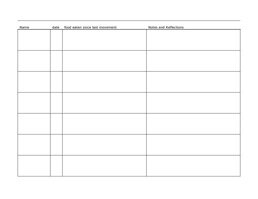Lia Rousset
A durational performance open for public participation
YEAR 1
SetupInside
Build a bucket toilet to suit your style and needs. Go to a local sawmill and gather saw dust; place in a receptacle by your new toilet. Get a clipboard, print out the chart in this document, and place it by your new toilet. Feel free to invent your own recording system. Document this inside setup step.
Outside
Build three 3’ receptacles side by side with the bottom open to bare soil. Line with chicken wire if animals are a problem in your area. Fill the first receptacle with a 2’ layer of leaves or straw. You have created pile #1. This is where you will place your waste resources in YEAR 1. Kitchen waste resources will go in the same pile. Fill the second receptacle with rough organic material (leaves, straw, etc.) and cover with a tarp. Designate a place for tools used for compost, including rake, long handled brush, thermometer and shovel. Document this outside setup step.
Process
Start with a bucket lined with 2” of sawdust. Pee and poop in your bucket toilet. After each event, cover with a layer of sawdust. Record what you ate since your last bowel movement on the chart provide. Record any thoughts and feelings you might have related to the performance.
Repeat until bucket is full.
Once your bucket toilet is full of excrement and sawdust, dump it in the center of pile #1. Clean bucket with long-handled brush (designated for this activity) and water. If needed, use biodegradable soap. Pour wash water onto compost pile. Place a layering of straw, or any coarse organic material over your pile.
With subsequent buckets of your waste resources, use a rake to move the top layer of straw/leaves/etc. Make your pile flat on top, and pour your contents on top. Replace the top layering material. Add more, if needed.
Every time you are at pile #1, stick a long thermometer in it. Record the temperature at 20” depth.
Replace bucket in your toilet with 2” of sawdust covering the bottom.
Invite friends and visitors to use bucket toilet. Ask them to please record what they have consumed since their last bowel movement, as well as any thoughts or feelings they have upon using the bucket toilet. Ask to take their picture.
YEAR 2
Start pile #2 in the third remaining bin with 2’ of leaves and straw or other absorbent material.
Let pile #1 rest in place for one year.
Repeat performance from YEAR 1 for pile #2.
Talk with galleries and curators about hosting a show featuring the products of your performance.
YEAR 3
Smell and feel pile #1. Record what you experience.
Measure pile #1 in cubic yards and record.
Build a raised bed and plant flowers in it. Take pictures of your flowers as they are growing. Print, frame and decorate your bathroom with these pictures.
Send a bouquet of flowers to your alderman with a letter. Take a picture of the bouquet and retain a copy of the letter. Retain any response you may receive.
Help friends build their own bucket toilet systems. Take picture of them with their bucket toilet.
Let pile #2 rest. Start pile #3 in pile #1’s old bin.
YEAR 4
Smell and feel your piles. Record what you experience.
Have pile #1 and #2 tested in a lab. Print the tests out and frame them. Hang on your kitchen wall.
Measure pile #2 in cubic yards and record.
Build another raised bed and put pile #2 in it.
If the test comes back devoid of pathogens, plant tomatoes and flowers in your raised beds from both piles. Record how many pounds you harvest from these beds. Can tomato sauce from these tomatoes. Save these products. Design packaging to reflect the salient data and thoughts from your performance.
If tests are not optimal for growing food, grow flowers an additional year in both piles.
Have a gallery show with pictures, products and data you have gathered. During the show, hold free workshops sharing your process. Workshop participants will build several bucket toilets for gallery use.
Everyone who enters the gallery is invited join the performance by pooping and peeing in the gallery bucket toilets. Contact information should be retained.
Hold a big dinner party in the gallery featuring the tomato sauce and/or bouquets of flowers.
Extra jars of tomato sauce and flower bouquets will be for sale. Prints may be for sale. Orders for bags of compost will be taken.
Take the gallery buckets home and compost the contents.
Plan another dinner for next year. Specifically invite the people that contributed to this year’s performance.
ADDITIONAL NOTES
If there are others you know that want to do this project at the same time, compile your resources and plan a group show.
Any additional documentation is welcomed. For instance, you may want to take a picture of your stool in the bucket toilet each day for a year.
Talk to people about your composting experience every chance you get.
Always refer to excrement and kitchen scraps as “waste resources”.
If you come up with new designs or working practices, draw them up and make them openly available.
For further information on the composting process, see Joseph Jenkins’ The Humanure Handbook.
Question regarding the durational performance can be address to Lia Rousset:


